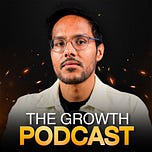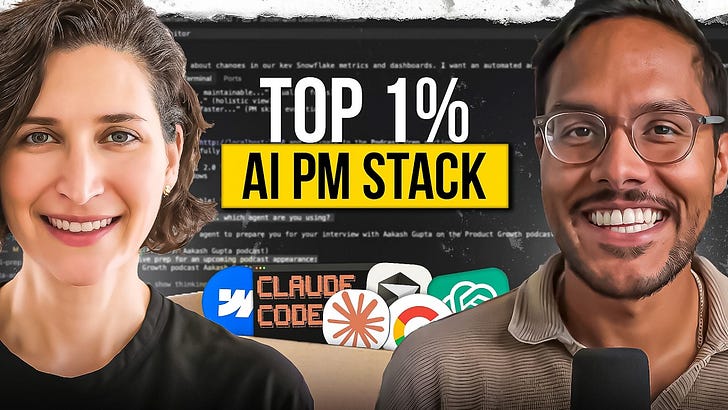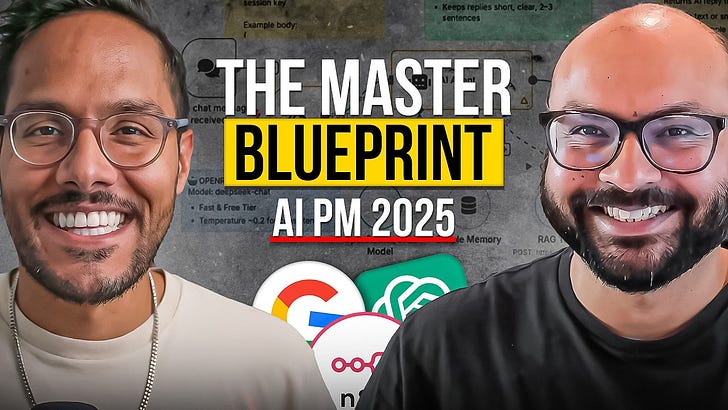Listen now on Apple, Spotify, and YouTube.
Brought to you by:
Enterpret: Transform customer feedback into product growth with custom AI
Anvil : The fastest way to build software for automating documents
Dovetail: The Fastest Way to Understand Your Customer
“Most product managers think they’re doing strategy, but they’re not.”
“I hate founder mode. Just because you're really good at going from zero to one does not necessarily mean you can take a company from 20 million in ARR to 150 million in ARR to like a Facebook size.”
That’s just two of the many eye-opening insights from Melissa Perri.
In today’s episode, Melissa pulls back the curtain on what product strategy really is (and isn’t), how to scale high-performing teams without losing focus, and the biggest mistakes PMs make when balancing user needs and business goals.
This is a masterclass for PMs at every stage who want to excel at rethinking roadmaps, avoiding execution traps, and building products that drive measurable outcomes — not just features.
Our Agenda:
The Science Behind Crafting a Winning Strategy — 00:13:17
The 5 Layers of Strategy Every PM Must Master — 00:33:18
Prioritization Perfected: Mastering the Cost of Delay Concept — 01:18:29
“Product Kata”: The Iterative Framework That Drives Success — 01:35:59
How to Land Your Dream PM Job: Proven Advice That Works — 01:52:23
Here are the Key Takeaways
Here are 5 of Melissa’s most powerful insights:
1. Be a Decision-Maker, Not Just a Facilitator
Your role isn’t just about taking notes in meetings or simply coordinating tasks across teams.
At its core, it’s about making tough decisions, owning the outcomes, and driving the product forward.
She shared an example was of a junior PM who struggled with over-collaboration.
This PM frequently delayed decisions, trying to build consensus among multiple stakeholders. While the intent was noble, the lack of decisiveness stalled progress and frustrated the team.
However, when he adjusted his approach and included only the “right decision-makers,” everything improved: faster delivery timelines, higher team morale, and more impactful outcomes.
You must step up as a decision-maker rather than a coordinator. This will build trust with your team and ensure the product stays on course.
2. Discovery Never Ends: Why PMs Need to Embrace Continuous Discovery & Product Kata
PMs who rely on static discovery phases risk building products based on outdated assumptions. Continuous discovery, combined with iterative frameworks like Product Kata, allows for real-time validation and adaptation.
Here’s how:
Start with a big goal, break it into smaller challenges, and iterate through experiments to validate solutions.
Validate ideas with users at every stage — not just after building everything— to ensure you’re addressing the right problems.
Engage designers and engineers to align on discovery insights and shared goals.
Great products aren’t built from a single discovery phase — they’re shaped by continuous learning and iteration.
3. Most PMs Aren’t Doing Strategy — They’re "Executing” Tactics
Many PMs excel at execution — managing tasks, shipping features, and meeting deadlines. But execution alone doesn’t drive any impactful results.
They must focus on strategy: making deliberate choices that align with user needs, business goals and deliver measurable outcomes.
Always consider the bigger picture — how does your product move the needle for the company’s long-term goals?
Define success by outcomes, not outputs.
Ask yourself: what business impact will this feature or initiative achieve?
PMs who master strategic thinking—identifying the right problems to solve and making bold decisions—will not only deliver meaningful results but also establish themselves as true leaders in their organizations.
4. The Hidden Trade-Offs of Product Management: Balancing Users and the Bottom Line
It’s easy to fall into the trap of building everything your users ask for.
But focusing solely on user needs while neglecting business goals often leads to unsustainable products.
She shared a case study where a company prioritized “nice-to-have” features requested by their most vocal users. While these features improved user satisfaction scores, they didn’t contribute to the company’s growth or revenue.
After a strategic pivot, they evaluated every initiative with the three pillars of success:
Desirability: Does this solve a meaningful user “monetizable” problem?
Feasibility: Can we build and deliver this effectively?
Viability: Does it support our business objectives sustainably?
This change not only boosted their revenue but also improved long-term user engagement.
Great product management isn’t just about delighting users; it’s about creating products that satisfy user needs and drive sustainable business growth.
5. The Evolution of the PM Role
Over the last decade, the Product Manager role has transformed from being task-focused to becoming a cornerstone of strategic decision-making.
PMs are no longer just coordinators — they're expected to align user needs with business goals and drive measurable outcomes.
Here’s how you can catch up:
New Skills Required: You must combine technical fluency with business acumen. Data analysis, market understanding, and outcome-driven roadmaps are now non-negotiable.
Be a strategic leader: Learn the art of delegating, focus on strategic problem-solving, and set boundaries to prevent being bogged down by execution details.
Adapting to Market Changes: With the PM hiring peak of 2021 behind us, companies now prioritize experienced and multi-skilled professionals over junior hires.
For more details, listen to the full episode now!
Referenced
Book: Escaping the Build Trap By Melissa Perri — a guide for PMs to escape the cycle of building for the sake of building.
Frameworks/Strategies
Product Kata — a systematic approach to break down product initiatives and problems into smaller, iterative steps
Portfolio Strategy Framework — a structured approach for managing product portfolios by aligning individual product strategies with overall organizational goals.
Gib Biddle’s Netflix Strategy Insights — evolving from DVDs to streaming and original content, aligning innovation with long-term growth.
Where to find Melissa
If you prefer to only get newsletter emails, unsubscribe from podcast emails here.
Up Next
We have some great podcasts coming from Colin Lernell, Andrew Capland, and Ramli John. I’m so excited to share them with all of you.
In the newsletter, check out this week’s latest piece if you haven’t yet: How to Move Geographies as a PM
And look out for these pieces up next:
How to Build an Empowered Team
How to Write an AI PM Resume
Onboarding Metrics: Advanced Topics and Practice
I think you’re going to love what’s coming up,
Aakash













